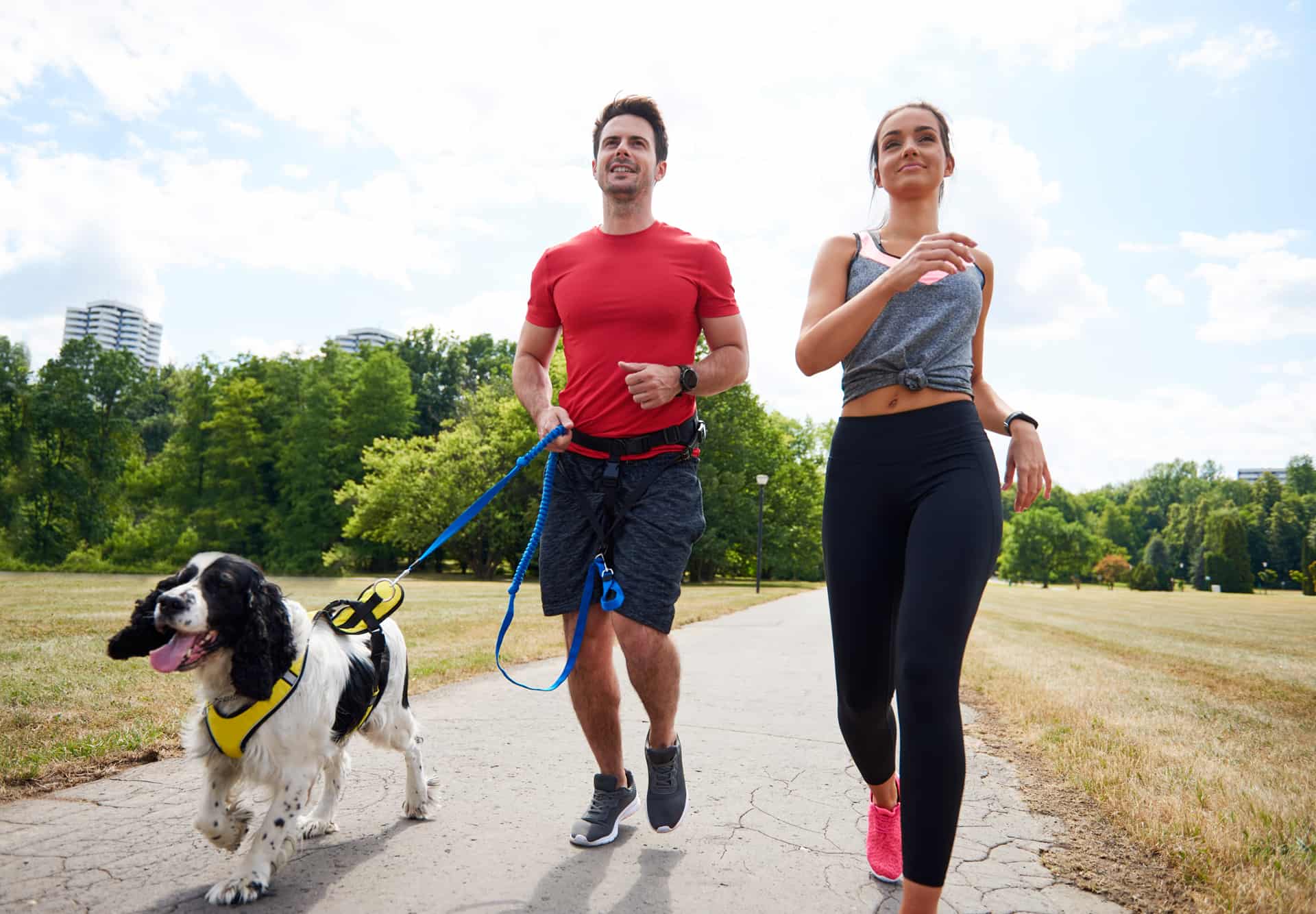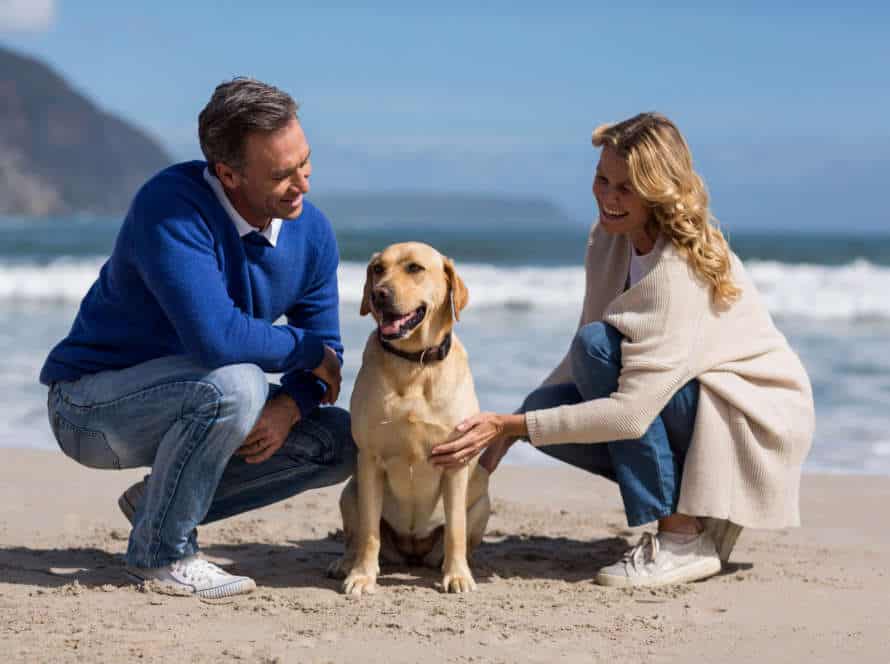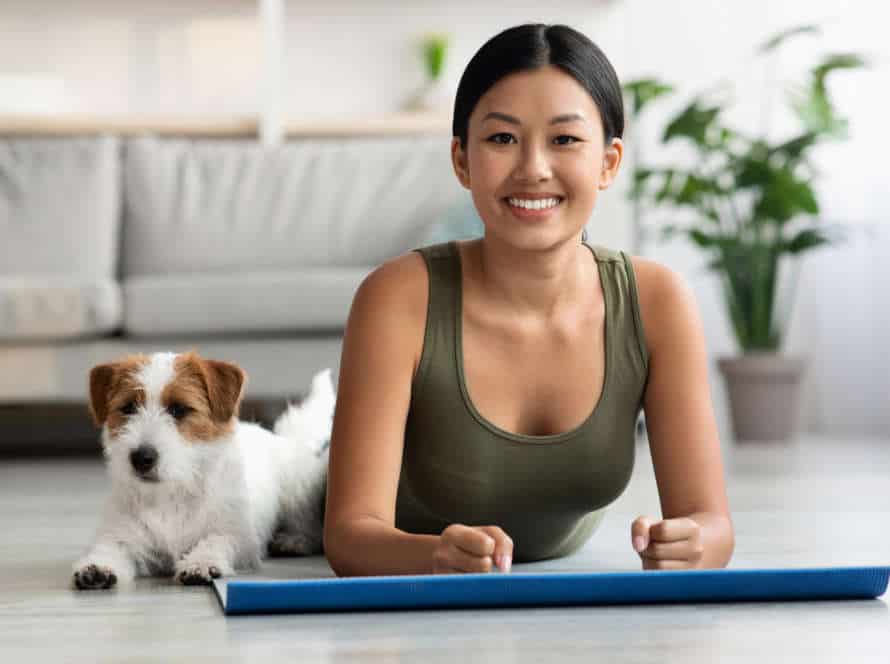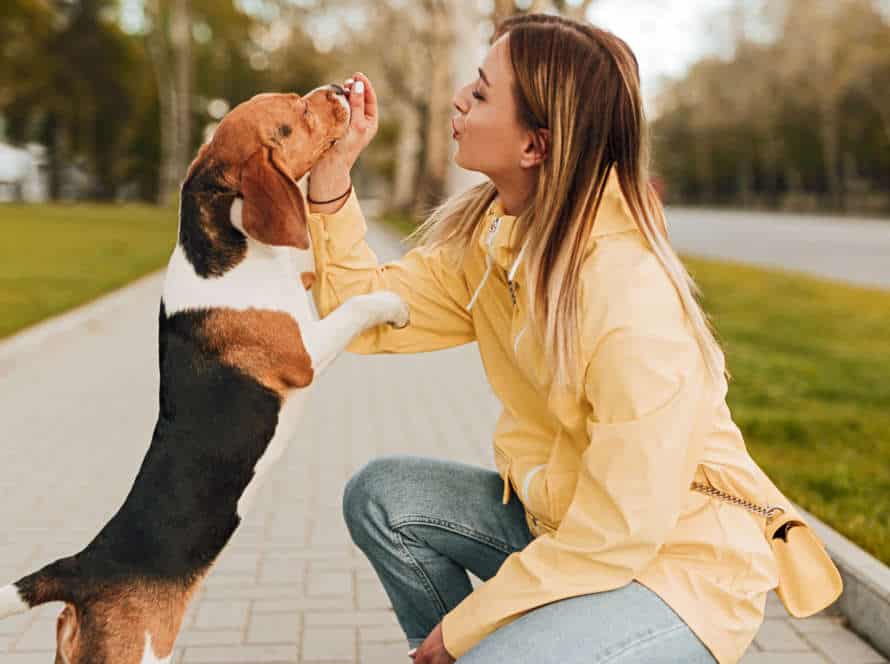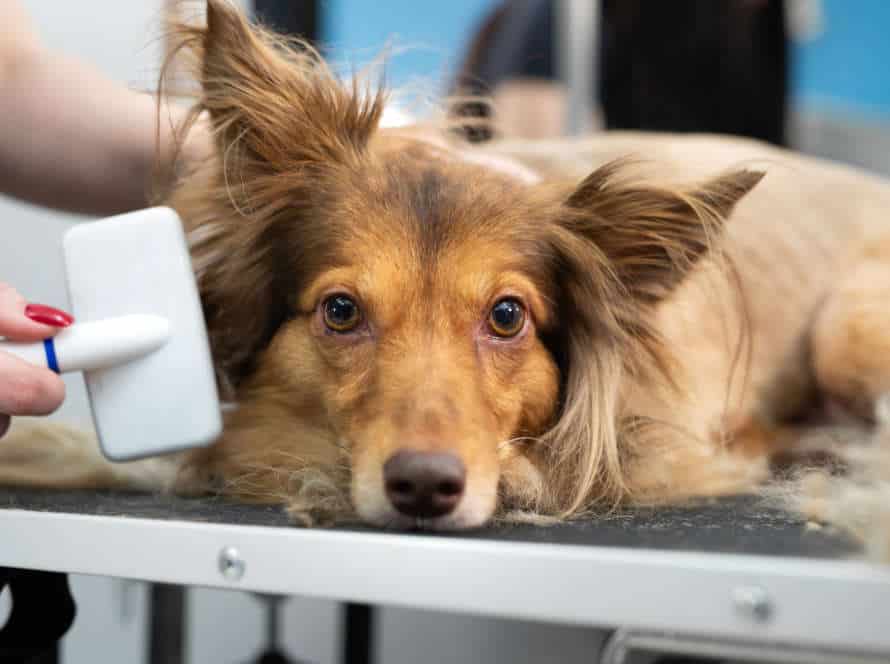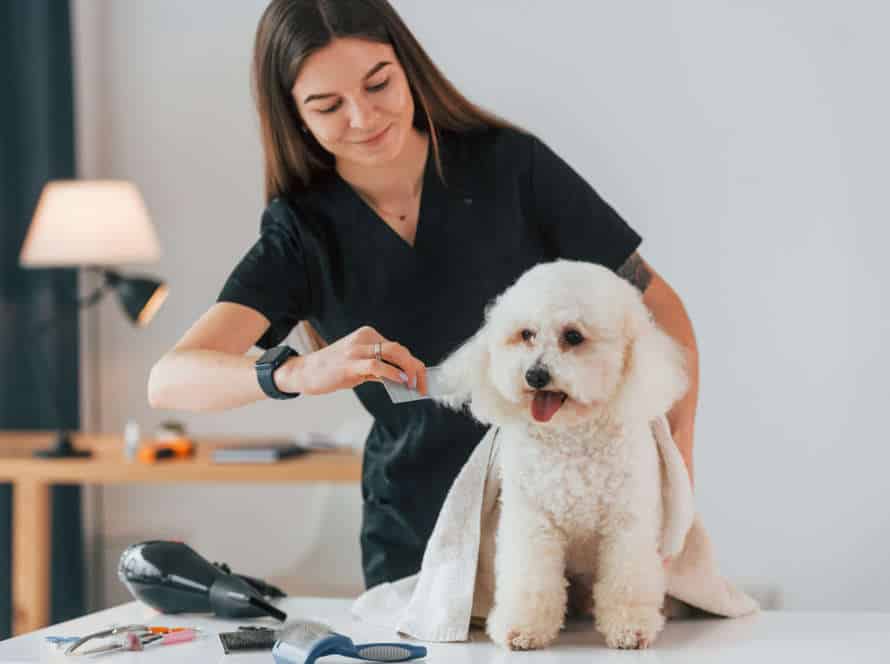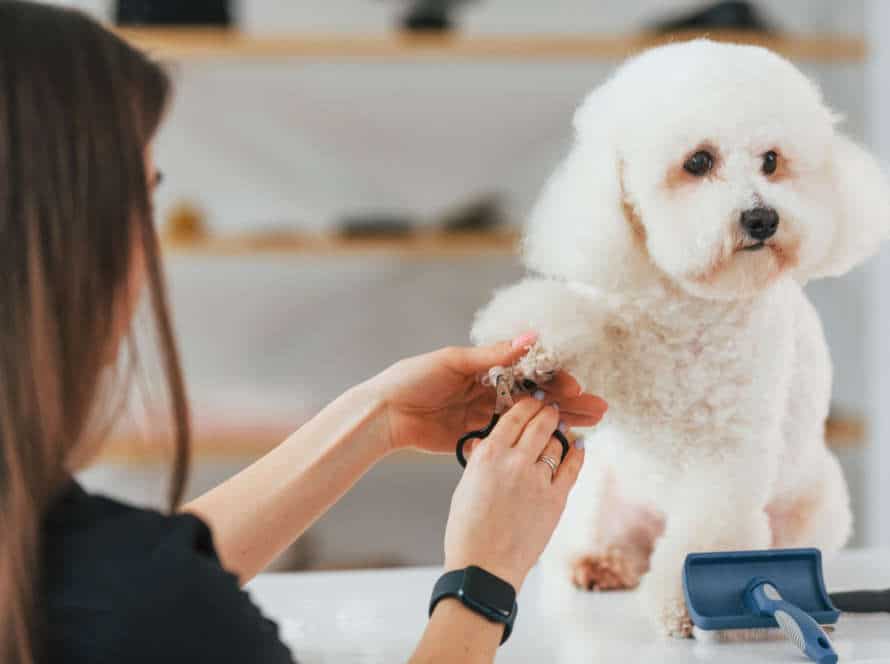A Comprehensive Guide to Exercise for Aging Dogs
As your pup ages, they need different exercises to stay healthy and happy. Here’s a guide to exercising your aging dog:
- Start slow. Senior dogs can’t do the same exercises as younger ones. So, go on slow walks, swim, or have short play sessions.
- Watch your pup’s behavior. See how they respond to the exercise. Look out for signals like limping, panting, or wheezing.
- Balance exercises. Standing on hind legs or using a balance board helps your senior pup stay fit.
- Mental stimulation. Give them puzzle toys and obedience training for mental exercise too.
With the right exercise and care, senior dogs can live a full, healthy life.
Understanding the Unique Needs of Aging Dogs
Aging canines have distinct requirements than younger pups when it comes to physical activity. As they mature, they may not be able to move around as they once did. They could also be more prone to harm than younger dogs. To guarantee your aging canine can participate in regular exercise securely and appreciate the advantages it offers, comprehending these needs is essential.
Importance of Regular Exercise for Aging Dogs
As dogs age, exercising regularly is key for physical health. Exercise helps manage weight, mobility, and cognitive functions. But, the type, intensity, and time of exercise must be adjusted for each unique pup.
Here’s what to consider when exercising aging dogs:
- Low-impact activities like swimming, walking, and short runs are great.
- Exercise frequency and length should fit their age, health, and breed.
- Strength and flexibility workouts can keep muscles strong and joints flexible.
- Be aware of how they’re responding to exercise. Don’t push them too hard.
- Finally, talk to the vet to create a program tailored to their needs.
Risks Associated with Inadequate Exercise
Aging dogs need exercise—but not just any exercise. Inadequate activity can have negative effects on both physical and mental health. Activity levels and energy decrease, but regular exercise is still necessary for mobility and health. Risks include obesity, joint stiffness, muscle loss and behavior problems.
Weight gain puts extra stress on bones and joints, causing pain, injury and stiffness. Inactivity leads to muscle loss, causing weakness and decreased flexibility. Plus, exercise is key to keeping away anxiety, depression and destructive behavior. To keep your aging pup healthy and happy, provide it with tailored exercise that fits its unique needs and limits.
Common Health Conditions in Aging Dogs and their Impact on Exercise
As dogs get older, they can be prone to health conditions that can affect their ability to exercise. Knowing about these conditions is important for providing the best exercise for aging dogs.
Arthritis is one of those conditions. It causes pain and inflammation in the joints, making it hard for them to move. Low-impact exercises, like swimming or short walks on soft surfaces, are good for dogs with arthritis.
Cognitive dysfunction is a problem in older dogs. It affects coordination and balance. Exercise and puzzle toys can help improve cognitive function and slow down the decline.
Heart disease makes it difficult for dogs to exercise, and they can experience chest pain and shortness of breath. Low-intensity exercises, like short walks and light playtime, can help keep them healthy while managing symptoms.
Obesity is another common issue in older dogs. It can lead to many health problems. Regular exercise, a balanced diet, and portion control can help manage obesity in dogs.
It’s essential to create an exercise routine tailored to the individual needs of aging dogs, so they stay healthy, happy, and comfortable.
Types of Exercise Suitable for Aging Dogs
Exercise is a must for all dogs. It’s even more important as they get older! Regular exercise helps elderly pups stay healthy and enjoy life. The type of exercise will depend on their age, physical condition, and capability. So let’s check out the exercises that are right for aging pooches!
Low Impact Exercises for Aging Dogs
As dogs age, it’s essential to give them regular exercise that won’t be too taxing on their bodies. Low-impact activities are ideal for senior pooches since they give the necessary physical activity without putting strain on their bones and muscles.
Here are some low-impact exercise options for aging dogs:
- Walking: Can boost circulation, mobility and help keep a healthy weight.
- Swimming: Weightless exercise, perfect for pooches with joint issues.
- Slow jogging: Step up from walking and a good cardio workout.
- Stretching: Gentle stretching can increase blood flow, range of motion, and joint flexibility.
- Mental stimulation: Puzzle toys, scent work and obedience exercises for engagement without physical effort.
These low-impact activities will guarantee elderly dogs stay content and healthy as they get older.
Strength and Conditioning Exercises for Aging Dogs
Dogs age and it’s essential to adjust their exercise routine to accommodate their physical limitations. Here are some strength and condition exercises for elderly dogs that promote their physical health and mobility:
- Slow walks or soft jogs.
- Swimming.
- Balance work.
- Core strengthening exercises.
- Low-impact games.
- Stretching.
It’s important to consult a vet before exercising an aging dog, as certain exercises may need to be changed based on any underlying health conditions. With proper exercise and care, elderly dogs can keep their quality of life and lead an active lifestyle.
Mental Stimulation Exercises for Aging Dogs
Mental stimulation exercises are a great way to keep aging dogs active and healthy. Plus, it can help prevent cognitive decline. Here are some exercises for aging dogs:
- Puzzle toys: These toys need your pup to figure out how to get treats. It exercises their brain.
- Scent work: Training your pup to find scents can boost their sense of smell and confidence.
- Basic obedience training: Refresh “sit,” “stay,” and “come” commands. Keeps your pup sharp and responsive.
- Interactive fetch: Balls or Frisbees that make noise or light up makes fetch fun.
- Tug of war: Builds strength and works on problem-solving.
- Swimming: Low-impact exercise and good for joints.
Check with your vet before starting any new exercise routine for your aging dog.
Creating an Exercise Routine for Aging Dogs
Exercise is key to keeping your aging pup healthy and happy. It’s not always easy to make a plan, but these tips can help! Here’s an overview of the types of exercises that work for older dogs, plus some advice for making sure your dog gets enough exercise.
Setting Realistic Goals for Aging Dogs
Making realistic goals for exercising is a must to keep aging dogs’ physical and mental health strong. Dogs, like humans, have different strengths and limitations when they get old. It’s crucial to create an exercise routine that fits their individual needs.
Here are some tips:
- Notice your dog’s behavior and energy levels to figure out the best type and amount of physical activity.
- Avoid activities that may strain their muscles and joints.
- A low-impact exercise plan such as walking or swimming reduces the risk of injuries.
- Begin with short and regular workouts and slowly increase the intensity and duration as your pup gains stamina and strength.
- Consult your vet before starting an exercise plan for your senior dog to make sure they’re safe and healthy.
Tips for Gradually Increasing Exercise Intensity and Duration
Creating an exercise routine for aging dogs can be tough. Age, health, and physical limitations must be considered. To keep them healthy and fit, intensity and duration should be upped gradually. Some tips:
- Start small – short walks or gentle play.
- Monitor behavior – watch for fatigue, discomfort, or pain, then adjust.
- Recovery time – older dogs may take longer to recover, so factor in rest days or shorter exercise.
- Check with vet – get their opinion on exercise and any health concerns which may affect ability.
As your pup ages, adjust their exercise routine to keep them healthy, happy, and active.
Factors to Consider Before Choosing the Right Exercise Routine for Your Aging Dog
When making an exercise routine for your aging pup, there are several things to consider. As dogs get older, their physical ability, energy, and wellness can change. Here are the five main points:
- Breed and size – Different breeds and sizes have different needs and limits when it comes to exercise. Smaller dogs may require less than bigger ones.
- Overall health – Your dog’s health status and any medical conditions should affect how you plan their exercise. Speak to your vet before starting a new program.
- Joint health – Arthritis is a common problem in older dogs, and high-impact exercises can make it worse. Try low-impact exercises like walking and swimming.
- Energy level – Older dogs tire faster, so adjust the intensity and duration of the routine to suit them.
- Mental stimulation – Exercise encourages mental health too. Add activities that challenge your pup, like sniffing and puzzle toys.
By thinking about these factors, you can help keep your aging dog’s health and quality of life in good shape.
Safety Precautions for Exercising Aging Dogs
Exercising aging pooches? Safety first! Understand: those aging bones, joints, and ligaments may not be as strong. So, take precautions to avoid strain or injury. This guide has everything you need to know about safe exercising for seniors.
Identifying the Signs of Overexertion in Aging Dogs
It’s crucial to recognize the signs of aging dogs that have exerted themselves too much. This is to protect them from harm during exercise. Here are some common signals:
- Heavy panting and breathing quickly
- Salivating a lot
- Limping or not wanting to put pressure on certain legs
- Moving slowly or refusing to exercise
- Falling over or passing out
To stop overexertion, it’s essential to slowly introduce exercise. Give them plenty of rest as well. Avoid high-impact activities like jumping or running on hard surfaces. Swimming or strolling on gentle terrain are good low-impact choices. Always ask your vet and create a tailored exercise plan based on your dog’s unique requirements and restrictions.
Tips for Keeping Your Aging Dog Safe During Exercise
For older pups, special care is a must when it comes to exercise. Take precautions to keep them safe while they get their daily workout. Here’s what to do:
-
Choose low-impact activities like walking, swimming, or jogging slowly. This won’t stress their bones and muscles too much.
-
Avoid exercising in hot and humid weather. Don’t expect too much from them physically.
-
Protect their paws, particularly when walking on rough surfaces like concrete or asphalt. Get some protective shoes or booties, if needed.
-
Keep an eye on their body language while exercising. Have breaks to avoid overdoing it.
-
Consult your vet before beginning any exercise routine for your aging dog.
Pro Tip: Pay attention to their needs and limits when exercising them. Start slow, don’t overdo it, and always show love and care.
How to Modify Exercise for Dogs with Specific Health Issues
As your pup grows old, regular exercise is essential for their physical and mental health. But, when exercising an aging dog, certain safety measures must be taken, due to existing health issues. Here are tips for working out with elderly pooches who have particular health problems.
- Arthritis: Slow walks, swimming, and soft stretches will benefit arthritic doggies. However, avoid activities such as jumping and running.
- Heart Conditions: Exercising may need to be restricted for those with heart issues. Ask your vet for a safe workout plan for your pup.
- Obesity: Regular physical activity, like brisk walks, can help manage weight. But, start slowly and raise intensity gradually. Don’t do high-impact exercises until your pup has shed some pounds.
- Hip Dysplasia: Water activities, walking on a leash, and gentle stretching are good choices for those with hip dysplasia.
Always speak to a vet before beginning a new workout regimen.
Incorporating Other Activities to Keep Your Aging Dog Active
As your dog ages, they may become less active and their joints stiffer. However, you can keep them healthy and active! Exercise is great, but activities like massage, massage therapy, and hydrotherapy can also have loads of benefits. Here are some ideas for activities to do with your aging canine companion. Have fun and keep your pup healthy!
- Walking: Dogs still need their regular exercise, but it may be helpful to take more frequent walks for shorter periods rather than one long walk.
- Swimming: Swimming is a low-impact exercise that may be easier on older dogs’ joints.
- Massage: Gently massaging your dog’s muscles can help to relieve tension and improve flexibility. There are also certified massage therapists who specialize in working with dogs.
- Hydrotherapy: Hydrotherapy involves using water to provide resistance for low-impact exercise. This can be a great option for older dogs who experience joint pain.
- Puzzle toys: Not all activities need to be physical. Puzzle toys can provide mental stimulation and help keep your dog’s mind sharp.
Socializing with Other Dogs
Socializing with other pooches can help keep your aging pup active and mentally sharp. Here’s how:
- Introduce new doggos slowly and in a controlled environment. A neutral spot such as a park or yard is perfect.
- Be sure to observe your pup’s body language and behaviour. If they seem anxious or unwell, take a break or remove them from the situation.
- Consider enrolling your pup in a training class or group activity, like dog sports or a hike. This way, they can socialize and have fun at the same time.
- Remember your pup’s limitations and adjust activities accordingly. As they age, they may not be as energetic or have the same endurance. Short walks or gentle playtime might be better.
Pro Tip: Socializing and exercising regularly can help prevent common problems in older dogs, like weight gain, arthritis, and mental decline.
Interactive Indoor Games for Aging Dogs
Interactive indoor games are great for an aging dog’s wellbeing! They can reduce boredom, cognitive decline and behavioral problems. Here are the best ones:
- Find It Game: Hide treats or toys around the house and let your pup find them.
- Puzzle Toys: These help problem-solving and cognitive skills. Plus, you can hide treats inside.
- Tug-of-War: Build strength, burn energy and relieve stress. Use a soft toy and be gentle with teeth.
- Laser Pointer Game: Create a moving target for your dog to chase. Don’t shine the laser in their eyes.
Remember to speak to your vet before starting any new exercise. Plus, daily walks, swimming and training sessions will help keep your senior dog healthy and active.
Training Sessions for Aging Dogs to Maintain Mental Health and Agility
Training sessions are a great way to keep older doggos mentally and physically agile. Incorporate activities to keep them active and content. Use this guide to exercise for aging dogs and maintain their wellbeing for years! Here’s what to remember:
- Start off slowly and increase intensity as your pup gets more comfortable.
- Spice things up with puzzles, scent games and obedience training.
- Always make sure your pooch is warmed up before the session.
- Offer lots of breaks and water along the way to prevent fatigue.
By following these tips, you can create a fun, effective training plan that keeps your senior dog healthy and strengthens the bond between you two. Don’t forget – regular vet checkups are key to identifying any health issues early on and tailoring the training sessions.
Frequently Asked Questions
1. How much exercise should my aging dog get?
Answer: It varies depending on your dog’s size and health, but generally, senior dogs should get at least 30 minutes of exercise per day. Take into account your dog’s energy level and willingness to exercise.
2. What are some low-impact exercises for senior dogs?
Answer: Swimming, brisk walks, and light play with soft toys are great low-impact exercises. Avoid high-impact activities like running, jumping, and intense tug-of-war.
3. How do I know if my dog is overexerting during exercise?
Answer: Watch for signs like excessive panting, lethargy, and difficulty walking or standing. If your dog collapses, it’s a sign of extreme overexertion and you should seek veterinary help immediately.
4. How can I make exercise more enjoyable for my aging dog?
Answer: Try mixing up the routine, bringing along a friend (human or another dog), or finding an outdoor space that smells interesting to your dog. Rewarding with treats and positive reinforcement can also make exercise more enjoyable.
5. What can I do if my dog has joint problems and can’t exercise as much?
Answer: Consult with a veterinarian to see what exercises are safe for your dog. Low-impact exercises like swimming and gentle walks may be helpful. Additionally, providing joint supplements and pain medication can help with joint pain and improve mobility.
6. Should I still exercise my dog if they have health issues?
Answer: It’s important to consult with a veterinarian first to find out what exercises are safe for your dog. Some health issues may limit the amount or type of exercise your dog can do, but even a short walk can be beneficial for their overall health and wellbeing.

